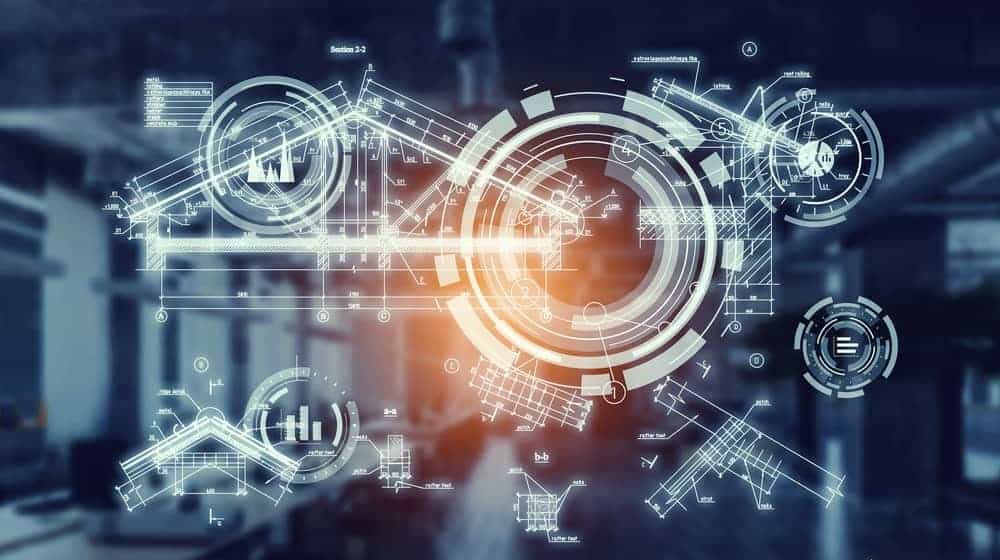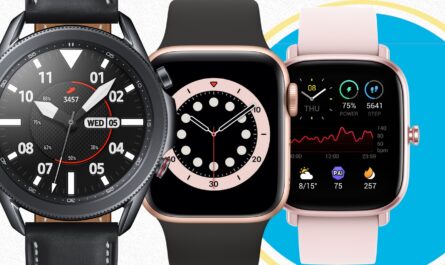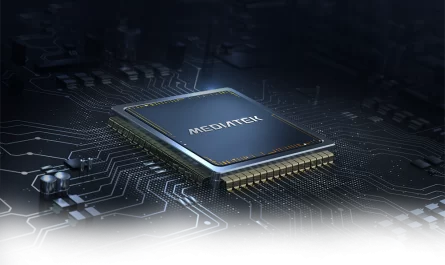Technology has come a long way in the past two decades. Here you will know different technology forms. More and more, people are using technology in their everyday life, whether it is for entertainment or education. However, not everyone understands what types of technologies exist and what they’re used for. By learning about the different types of technology, you’ll be able to judge whether something is a good value or not.
Definitions of Technology
There are many types of technology. While technology is something that has been around for long periods of time, it is only relatively recently that the term “technology” has come to mean a collection of methods and techniques that have been developed to solve problems.
“Technology” is not a synonym for “science”. Science, as it’s often portrayed in the media, is a term meaning a methodical study of nature. Technology can also be defined as a collection of tools and processes used to design and improve an artifact. Technology can also be described as any knowledge or practices that are passed from one generation to the next.
Different technology forms
1. Communication
Communication technology is a broad term that covers the tools we use to communicate with one another. There are also different communication technology forms. This includes communication devices ranging from telephones and radios to computers and satellites. It also involves the ways we communicate, such as through speech or language and other signs and symbols.
Television
Television, which is the most well-known type of communication technology, transmits signals over which we can listen to and view audio and visual content. People use television to communicate important messages, advertisements, entertainment and more. Most televisions receive signals from a cable wire or over the internet, which relays signals that direct a television set on what content to display.
Internet
The internet is a collection of interconnected computers called nodes. Nodes are separate computers or devices that are linked together by telephone, cable or optical fiber cables, satellite communications or radio waves. Once connected, each node has access to any information stored on the others. The nodes do not have to be located in the same place; they can be connected by the internet using devices such as modems and wireless routers.
Internet networks are structured from three different layers. The first layer is the physical and data link layer, which consists of cables and routers. The second layer is the internet layer, which defines how data is formatted when it passes over the internet. Finally, the third and topmost layer is the application layer, or end-user applications that allow us to connect to and use a resource on a remote computer somewhere else on the Internet.
Cell phones
A cell phone is a personal communication device that we can use to make and receive telephone calls. Although the term “cell phone” is often used generically, it actually refers to several different types of communication devices such as smartphones and feature phones. Cell phones can be used for making calls, sending texts messages and accessing the internet. Because of their portability, cell phones are found in pockets, purses and handbags of many people throughout the world.
2. Electrical
Electrical technology is the study of electricity and electromagnetism. There are also different electrical technology forms. This field focuses on how to make and use electricity to create devices such as machines, tools and instruments. The term electrical usually refers to electronic devices, which take advantage of the electrical properties of materials.
Computers
The invention of the computer is one of the most significant accomplishments of electrical engineers. Computers are devices that can process information and solve problems. The first computers were huge and took up entire rooms, but today they fit in our pockets. The first programmable calculator was developed in 1801, but it wasn’t until 1926 that Howard Aiken developed a computer based on the decimal (base-10) numeral system and electromechanical relay technology.
Circuitry
Circuitry is the study of electrical circuits, or paths of electrical current. Engineers use circuitry to design a variety of functional electrical devices and systems. Sometimes these systems are so complex that engineers work together to solve problems. In most cases, however, electrical engineers specialize in smaller subjects such as circuit analysis and circuit design.
Artificial intelligence
Artificial intelligence is a field of study that focuses on how we can create computer systems that think and act like humans. As the name implies, artificial intelligence is the practice of making computers behave in much the same way as humans do. Artificial intelligence research can be divided into two subcategories: computer science and cognitive science.
Software
Software is a collection of instructions that tell a computer how to perform a specific task. Programs and applications running on computers are the most common form of software. Software can be broken down into categories such as operating systems, data, applets and system programs. While most programs are mobile, they can think like humans to control lights, operate elevators and even fly airplanes!
Audio and visual technology
Audio and visual technology refers to technology that is used for the purpose of communication, entertainment and information. This technology can be found in many different forms such as television, movies, newspapers, magazines and more. Today’s electronic devices use audio and visual technologies to capture sounds that we hear and display images we see.
3. Energy
Electrical engineers have an important impact on the overall well-being of the world’s energy supply and resources. There are also different energy technology forms. Electrical engineers design and develop power plants that provide electrical energy to homes, offices, and factories. They also help improve how we use renewable energy such as solar, wind, hydro, and geothermal power.
Energy storage
Energy storage is the storage of electrical energy in a battery or capacitor. This can be stored in various ways such as using a giant flywheel or an enormous refrigerator powered by a generator. Some of these devices store electrical energy in liquid form to use later when it is needed. Today, many electrical components are being developed that can store and release huge amounts of energy at once making them an important tool for future green electricity.
Solar panels
Solar panels collect sunlight, convert it into electricity and store the energy in batteries. These cells can be placed on buildings, cars or any other place that needs a roof. Solar panels are one of the most efficient types of energy storage devices available today, making them an environmentally friendly source of power.
Hydroelectric power
Hydroelectric turbines are used to generate electricity from water flowing down hill. The water is collected at the top and transformed into mechanical energy which powers various devices such as machinery and trains. Hydropower can be found in many countries around the world including Canada, China and Russia.
Batteries
Batteries are used to store electrical energy. This include both disposable and rechargeable types, which can be found in cell phones, watches, and computers. Batteries can be used to power small-scale electronics and even electric vehicles such as cars, boats and airplanes.
4. Mechanical
Mechanical engineers design and build machines, such as cars and airplanes. There are also different mechanical technology forms. They also develop the tools that other engineers need to design new products. The major types of mechanical engineering include mechanical systems, manufacturing, aerospace, biomedical and mechatronics.
Manufacturing

Manufacturing is the mass production of a product using machines. Industrial manufacturing is carried out on a large scale, making everything from clothes and toys to cars and airplanes. Manufacturing can be broken down into three categories: machining, welding and assembling. Mechanical engineers use computer-aided design (CAD) software along with computer-aided manufacturing (CAM) software to design and manufacture products.
Heavy engineering
Heavy engineering is a subset of mechanical engineering that involves the manufacturing of large industrial machines, such as cranes, ships and locomotives. Although it is often considered a subset of mechanical engineering, heavy engineering is unique because it often uses materials other than metal. For example, ships are built with wood to reduce weight.
Aerospace engineering
Aerospace engineers design and develop aircrafts and spacecrafts used in both research and commercial purposes. Engineers work with a variety of materials including metals, plastics and composites. They may do tests on models before full production to ensure performance and safety standards are met.
5. Medical
Medical engineers design and develop medical devices and systems used to detect and diagnose diseases. There are also different medical technology forms. In addition, they create diagnostic medical equipment such as x-ray machines and CAT Scanners used in hospitals. Some of the most common medical engineering devices include: pacemakers, hearing aids, stents, blood pressure cuffs and defibrillators.
Biomedical engineering
Biomedical engineers are responsible for creating complex medical devices and systems that can diagnose or treat a wide range of diseases such as cancer. They may also design new materials that can be used to create better treatments or even prevent disease from arising in the first place.
Diagnostics
Diagnostic devices are medical devices that help medical professionals treat and diagnose a wide range of diseases. Common types of diagnostic devices include x-ray machines, CAT Scanners, MRI machines and ultrasound machines. Medical engineers are responsible for designing these devices and creating materials that can detect and test various diseases at once.
Pharmaceutical
Medical engineers work with pharmaceutical engineers to design and develop new drugs that can treat a wide range of diseases. For example, today’s medical engineers and pharmaceutical engineers are working together to design new drugs to fight cancer.
Surgical
Surgeons are a subset of medical engineers that assist surgeons with the treatment and repair of body organs. Surgical engineers work with a variety of materials including plastics, metals and silicon. They may also work on tools used by surgeons to perform surgeries.
Monitoring
Medical engineers design and develop monitoring devices that can be used to test a range of body conditions. For example, they can measure heart rate, blood pressure and temperature. Monitoring devices are an important part of many medical tests because they help medical professionals determine the effectiveness of treatments and develop their next steps.
Mechatronics
Mechatronics is a branch of engineering concerned with the design or analytical study of mechatronic systems. Mechatronic systems integrate electrical and mechanical engineering to create smart products that perform tasks, such as navigation. Common types include: robotics, sensors, control systems and artificial intelligence (AI).
6. Transportation
Transportation engineers are responsible for developing and maintaining cars, trains, planes and ships. There are also different transportation technology forms. They may be in charge of designing the yacht or plane design or come up with new inventions that improve safety, efficiency, comfort and performance.
GPS
GPS is a system that calculates the location of an object based on satellite tracking. Most GPS devices today come with cell phones, portable navigation devices and cars. Although GPS systems were originally developed for navigational purposes, they are now commonly used to track the location of people, vehicles and property.
Flight
Flight engineers design and develop aircrafts (planes) used for transport. They may be responsible for designing the body of the plane or working on parts of the plane such as landing gears, wings or engines.
Nautical engineering
Nautical engineers create boats and ships. They design them to meet specific needs and use materials that are efficient for the applications. In addition, they develop gear to alter the performance of boats and ships in various sea conditions.
Vehicles
Vehicle engineering involves designing and developing all types of vehicles such as cars, motorcycles, trains and even spacecraft. In addition to designing a new car, vehicle engineers may improve current models to make them more fuel-efficient or reduce pollution.
Human factors engineering
Human factors engineers are responsible for designing systems and products that are easy to use and understand by people. For example, a product’s user interface is created by human factors engineers.
Safety engineering
Safety engineers work with human factors engineers to create user-friendly products that are safe, comfortable and efficient for people to use. By working with both design experts and usability experts, they can create products that are not only safe but also practical enough for people to use everyday.




